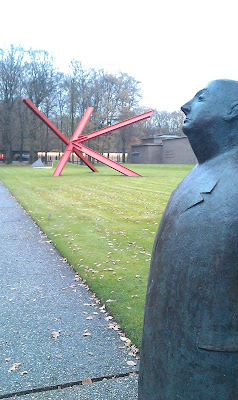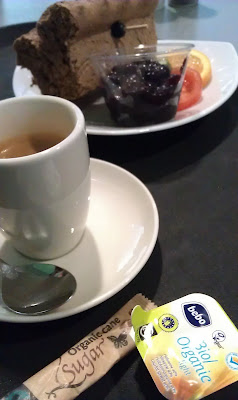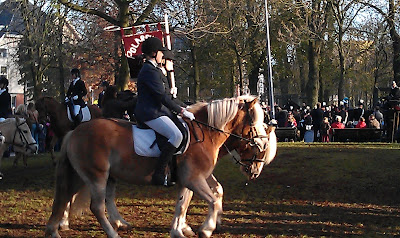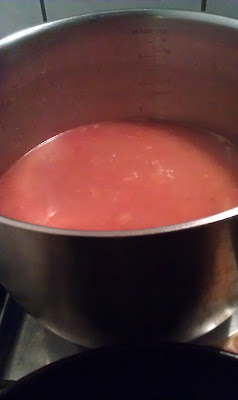My husband and I recently visited Bremen, Germany, for its charming Christmas markets. Bremen is in northwest Germany, about 180 kilometers east of Groningen, and is very accessible by public transit.
This time of year, the town is popular for its Christmas markets (known as "weihnachtsmarkt") - one of which is in the city center (
De Bremer Weihnachtsmarkt) and one of which is on the Schlachte Embankment along the Weser River (
De Schlachte Zauber). Bremen also has art museums, a lovely historic area, a gorgeous central square with a monumental town hall, and is also well-known as the intended destination of the traveling donkey, dog, cat, and rooster from the Brothers Grimm tale The Town Musicians of Bremen (for more information, see
the Wikipedia article on the Town Musicians of Bremen).
It was very easy to get to Bremen from Groningen using the
Public Express, which is a charter bus service that offers several rides per day between Groningen and various destinations in Germany, including Oldenburg and Bremen. We took an early morning bus, so that we could have a full day in Bremen, and come back to Groningen at night, thus saving the expense of booking a hotel room.
After catching the bus at the Groningen Centraal Station, we had a relaxing bus ride (about 2.5 hours) to Bremen's Central Train Station. Upon arrival, we perused the central Christmas market, where there were all sorts of Christmas gifts on offer - from ornaments to special German candies - and sampled some Glühwein (a German version of mulled wine).
After perusing for a bit, we stopped by the Bremen Tourist Information Center (
Bremen Touristik Zentrale) to meet up with a tour guide for a 2-hour walking tour of the city. Despite the cold and rainy weather, we still managed to enjoy our tour and we learned a lot about the city's history.
After our tour, we headed over to the Schlachte Zauber Christmas market, which has a more historical feel due to the old-fashioned wooden huts housing the Glühwein merchants and gift shops, traditional musical performances, and workers dressed in period costumes.
After a long day of walking, shopping, and drinking Glühwein in the cold winter weather, we boarded our bus ready for a nice long nap on the way back to Groningen.
Here are some photos from our day in Bremen:
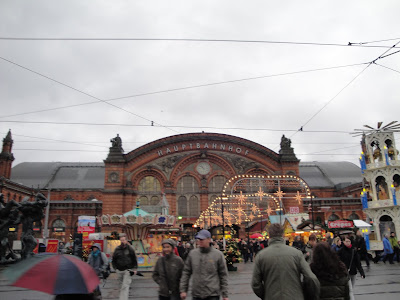 |
| The Hauftbanhof, Bremen's Central Station |
 |
| One of the ubiquitous Glühwein stands |
 |
| The central square, with Christmas market in foreground and the Rathuis (city hall) and St. Peter's Cathedral in background |
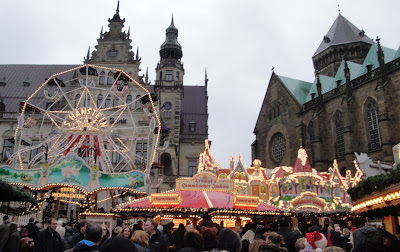 |
| Central Christmas Market |
 |
| An aerial view, taken from the ferris wheel |






